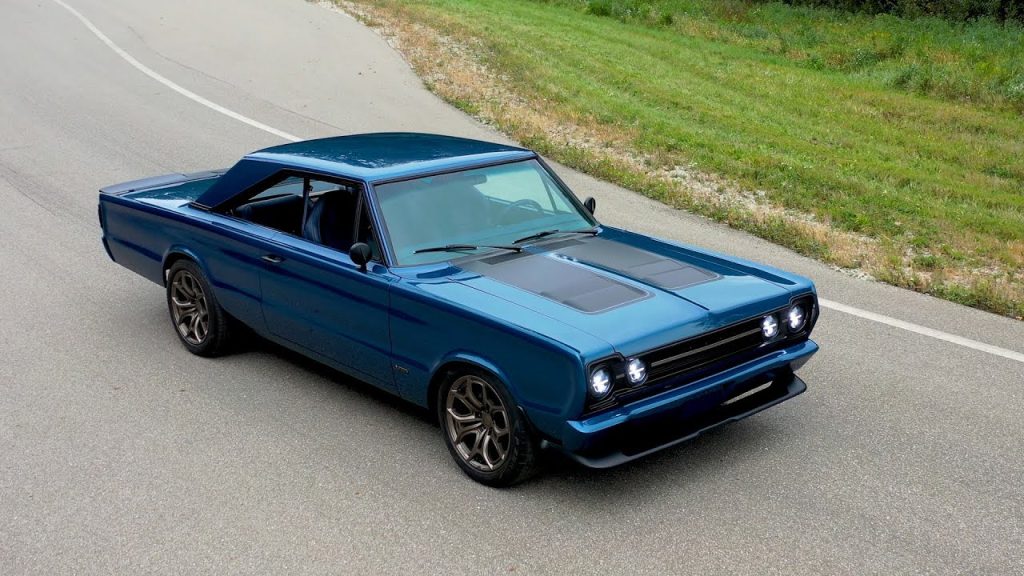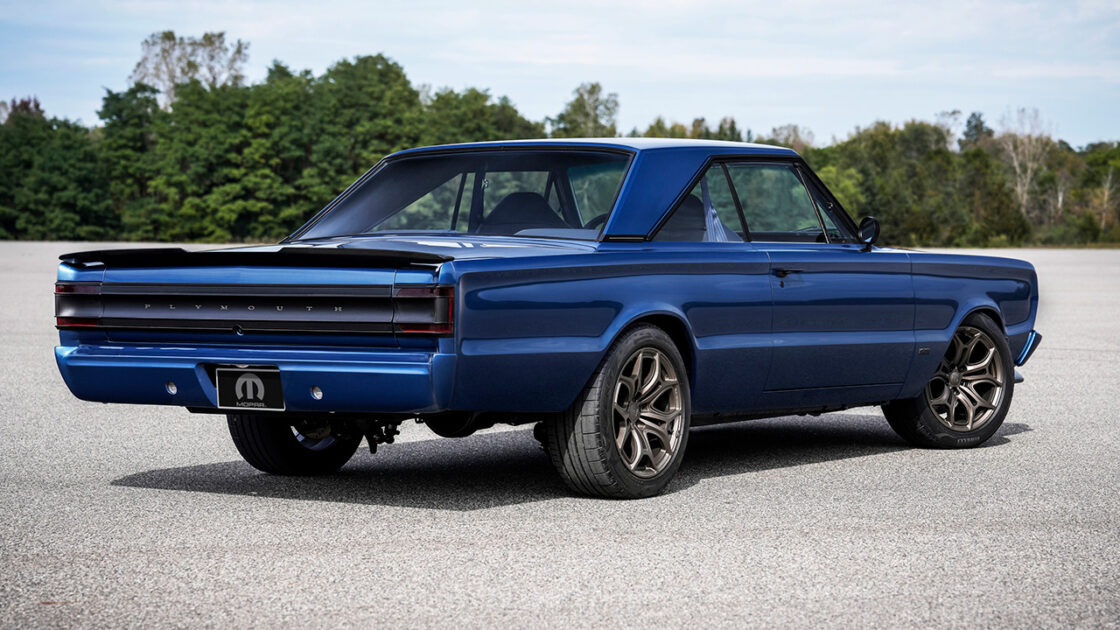With this year’s SEMA Show just around the corner, both automakers and aftermarket specialists are beginning to reveal their latest hot-rodded innovations.
Even as Stellantis moves away from traditional V-8 powertrains for 2025, the brand and its Mopar division are not leaving muscle cars behind.
The 1967 Plymouth GTX Electromod Concept blends classic muscle car style with cutting-edge EV technology, creating an unmatched restomod.
This new concept underscores the future possibilities of Mopar e-Crate EV powertrains in restomodding.
This particular build features Mopar’s Blue electric drive module (EDM): a 250-kilowatt unit sourced from the Charger Daytona, mounted to the classic chassis with custom hardware that Mopar has tailored for E- and B-body vehicles from the muscle car era.
Four strategically placed battery packs, totaling 73 kWh, supply the system while ensuring optimal weight distribution.
According to Mopar, this powertrain produces 340 horsepower and 335 lb-ft of torque—perhaps not as aggressive as expected for a car of this stature.
Nonetheless, the instant torque from the EV setup will make the GTX feel thrillingly fast. Adding to the style, Hellcat supercharger-inspired graphics adorn the EDM in the space once reserved for the engine.

The power routes to the rear wheels via a 3:1 gear reducer, paired with an 8.75-inch solid rear axle.
Stellantis estimates a 250-mile range per charge—somewhat inefficient given the battery capacity, but the car’s 1960s-era aerodynamics likely contribute to this.
No restomod is complete with just a powertrain swap. Mopar’s team reshaped the car’s bumpers front and rear, widened the rear wheel openings for a more aggressive stance, and equipped the car with distinctive 18-inch BTG Vintage forged magnesium wheels and Pirelli P-Zero tires.
A modernized set of Wilwood brakes hides behind the wheels, while carbon fiber accents—on the hood and splitters—add a refined touch to the car’s appearance.
Inside, the car has been reworked with modern features, including a state-of-charge gauge, battery and motor temperature displays, and a custom flat-bottomed steering wheel. However, it retains its iconic manual window winders, preserving some vintage charm.
EV conversions for classic cars are often a challenging concept for enthusiasts to embrace, as the powertrain is central to a vintage performance car’s identity.
Still, this particular build is executed exceptionally well and might even be more enjoyable to drive than some gas-powered cars with four-digit horsepower. Which classic American car would you like to see reimagined as an EV? Let us know in the comments below.

